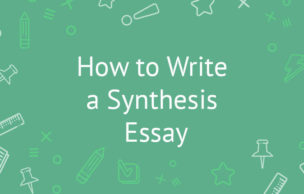How To Write an Essay Conclusion
What is the toughest part of writing an essay?
Some people believe that formulating a thesis statement is always a challenge. Others find it difficult to write a compelling intro that would hook readers in. Many students have a difficulty structuring their body paragraphs smoothly and coherently. Surprisingly, very few students mention essay conclusion as the most challenging part of essay writing.
This, however, is a huge mistake. Even though it seems like most of your work on an essay has already been finished, it is still unwise to underestimate your conclusion. Yes, first impressions may matter a lot, but it’s the last impression that is always the most memorable one.
Our professional writing team understands the value of a carefully written essay conclusion and urges all students to heed our expert advice. Always remember — this is the last part your audience will be reading, and this is your last chance to prove your point and make an impression on your readers.
Think that you might have been writing conclusions wrong? Read on then — we’ll tell you exactly what a quality conclusion should be and how you can write it, without too much effort.
Why conclusions are so important?
As it was already mentioned, a conclusion is your last chance to impress your audience and leave an impression on them. However, it has other, equally important goals. First of all, a conclusion restates all major points made in a paper. Sure, while writing a relatively short essay, this part may not seem important. But if you have been working on a ten-page-long essay, you cannot expect your readers to remember every little point you made in your body paragraphs. Here is when a conclusion comes in — it enumerates your main findings and reminds readers of your major arguments.
Given that conclusion is the last part of your essay, it should give readers a sense of closure. In conclusion, it is important to highlight why you have been writing this paper in the first place. A solid conclusion will:
- Urge readers to think more about the topic in question
- Wrap up your main thoughts in a positive manner.
It is equally important to remember that conclusion should not have any new information. As you write, you may be tempted to jump to conclusions (quite literally) and offer new solutions to the problem you are analyzing. This is a faulty approach that can negatively affect your grade. If you have not discussed these problems and their potential solutions in your body paragraphs, you should steer clear of this info in your conclusion as well.
Key features of a quality conclusion
- Conclusion restates your thesis statement and proves it either right (generally) or wrong
- A good conclusion is brief, but it should definitely run longer than 2-3 sentences
- It wraps up and does not include any new information
Here is an example:
Getting into this school and, later on, becoming a vet is one of my priorities (restating the thesis). Helping animals has been a passion of mine for years, and even though I understand the challenges associated with this career path, I am stepping on it with my eyes wide open (summary of the main points from the body paragraphs). The road to my dreams can be challenging, but the end result is definitely worth it (ending on a positive note).
Writing an essay conclusion: how-to’s
The length of your conclusion is directly related to the length of your essay. Still, there is a standard structure you can safely follow.
First sentence: restates (paraphrases the thesis)
Example:
- Thesis in the introduction: I want to get into a vet school Paraphrased thesis in conclusion: getting into a vet school is my priority.
- Sentences #2-5 (or more, depending on the length of your essay): summary of the main arguments made in the body of your paper. As a rule, there is one argument per paragraph. So, the number of sentences in this part will mostly depend on the contents of your essay.
- Final sentence: brings the reader back to your thesis and wraps up the paper on a positive note. When applicable, urges the reader to think more about the topic you’ve been analyzing in a paper.
Example:
The road can be tough, but the end result is definitely worth it.
Finally, you combine all of these sentences into a single paragraph, polish them up and get an example we’ve already given you above.
As you are writing your conclusion, it is important to avoid cliche phrases, like ‘in conclusion,’ or ‘to wrap up.’ By now, your readers already understand that you will be concluding and wrapping up, so there is no need to use cliches. Even a simple ‘so’ is a much better idea.
Once again, here is how a standard structure for an essay conclusion will look like:
- Restating the thesis
- Restating the main point of paragraph 1
- Restating the main point of paragraph 2
- Restating the main point of paragraph 3
- Concluding on a positive note, impressing the reader, making him think more about the topic
This is pretty much it. Yet, were it so simple, everyone would write astonishing conclusions, right? So, are there any other tricks that could help you nail this job? Of course, there are, and we will be discussing them below.
Useful strategies in writing a conclusion
Echo
Echo, also known as framing in literary analysis, is a technique that takes your readers exactly to the starting point. This type of ending is especially useful in personal and narrative essays because it looks cool and reminds your audience of where you started.
Example:
Introduction
From a heavily lit train station, I took a glimpse into the dark. The world was getting smaller every second. I reached out to my pocket only to realize…
Conclusion
As I reached into my pocket on that railway platform…
Predicting the future
Giving a prediction for the future in your conclusion is a great way to wrap up an argumentative or a problem solution essay. This is a perfect way to once again emphasize the importance of your subject and get the reader emotionally involved in your perspective on the topic.
Example:
Unless we stop treating our planet like a trash can, more and more dumps will open every day. And — who knows — some of those dumps might arrive right at our doorstep. In fact, they most certainly will — eventually. With the current approach to recycling, this is but a matter of time.
Call to action
Another great way to make your readers think more about the topic and, if possible, even take action. Plus, it helps you reveal the subject from a larger perspective and offer some insight on how the problem in question can be tackled.
Example:
We all can contribute to the problem of recycling. After all, our planet is our responsibility — just like it is our responsibility to raise awareness of the issue. From all the research provided, it becomes obvious that we should not only recycle our own trash, but urge our neighbors to do the same. This can be achieved through volunteer meetings, community organizations, and educating our children.
What not to do when writing a conclusion
Now that you know major tips and tricks on writing a solid conclusion for an essay, make a note of the things to avoid. You’d be surprised to know how many students ignore these simple dont's, which results in a grade, lower than they deserve.
So, here goes:
- Don’t state any new information. It’s only about summarizing the results you already described in your main body.
- Don’t get too personal (unless you are writing a personal narrative; in this case, do).
- Don’t rephrase every thought. Mention only the most important arguments/findings.
- Don’t repeat the thesis word for words — restate it.
- Don’t use slang and collocations — stick to formal language, suitable for academic writing.
The takeaway?
An essay conclusion is a vital part of your paper, and you should take it with all seriousness. Yes, writing a truly powerful conclusion can be a bit challenging, but if you follow the general structure and use some imagination, you will, most probably, succeed.
As you wrap up, keep your audience in mind. It will be way easier to impress the readers and convince them in your point of view if you know and understand the audience you are writing for. That’s pretty much it — good luck writing!





